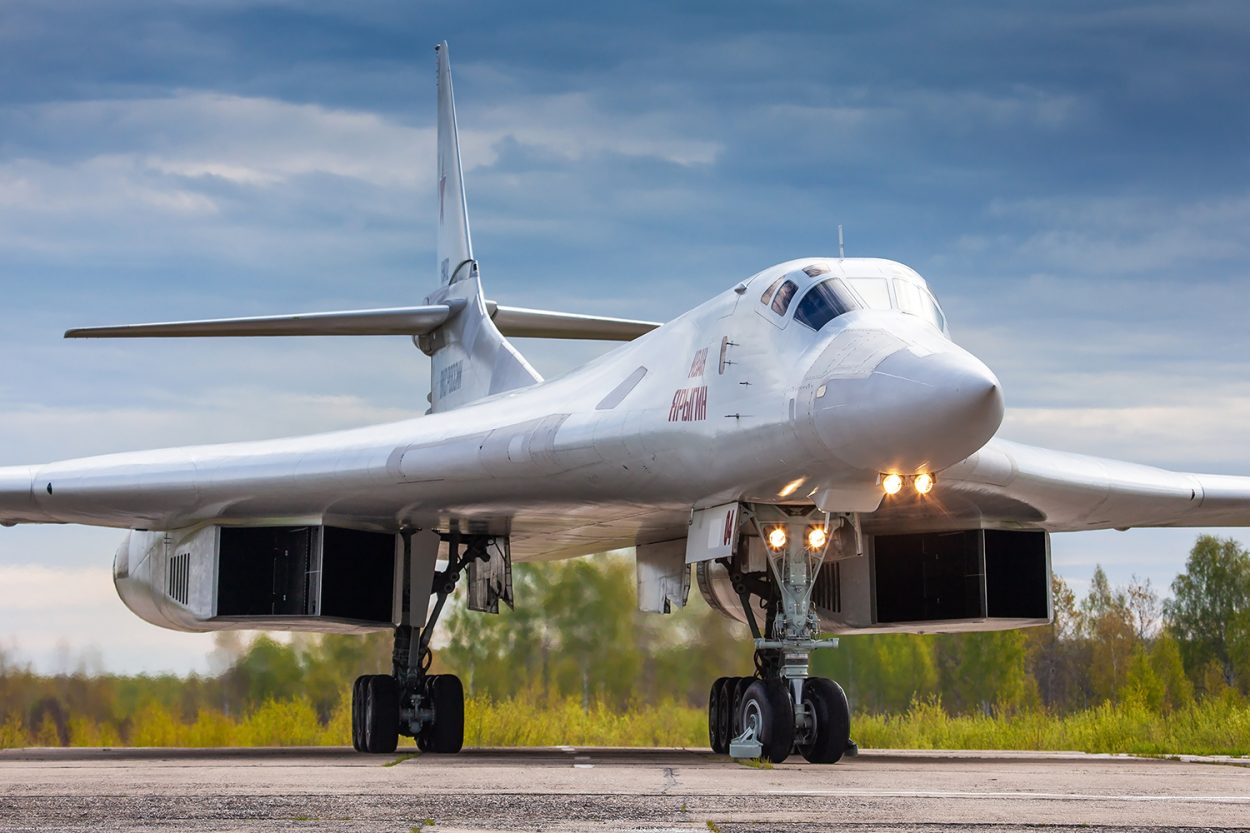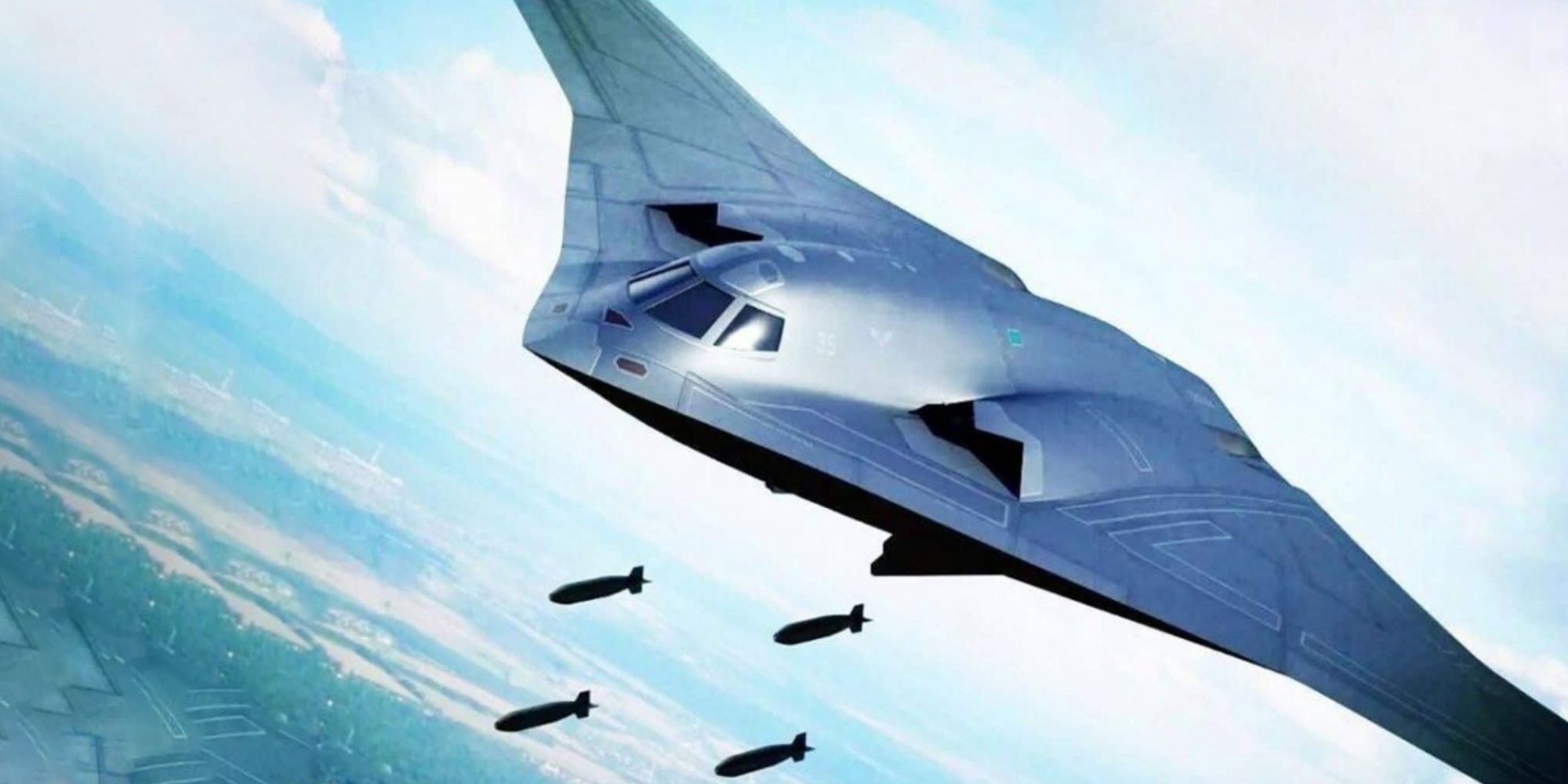Despite having the fourth largest Air Force in the world, India does not yet possess a strategic bomber aircraft. That might soon change, though, as there are speculations that India wants to buy one from its age-old friend Russia.
In what could be a covert indication, the former Chief of Air Force, Air Chief Marshal Arup Raha, made a passing reference to India’s plans to acquire a strategic bomber aircraft. He was speaking at the first edition of the ‘Chanakya Dialogues’ hosted by the Chanakya Foundation in New Delhi.
On being probed by Bharat Karnad, Senior Fellow in National Security Studies at the Centre for Policy Research, the former top Air Force Commander revealed that India was very closely looking to include the Russian Tupolev Tu-160. Russia has extensively used these strategic bombers in the war against Ukraine.
Intriguingly, the former Air Chief also casually mentioned the possibility of a nuclear warhead variant of a hypersonic glide missile being developed shortly.
EurAsian Times recently reported that the hypersonic version of India’s BrahMos cruise missile, the BrahMos-II, is likely to have the same performance characteristics as Russia’s Tsirkon (Zircon) missile.
The major world powers, primarily the US and Russia (erstwhile USSR), have owned strategic bombers since World War II. Strategic bombers are used by the three most significant air forces in the world today—the US, Russia, and China. In contrast, India, the fourth-largest air force, only has fighter-bombers.

A strategic bomber is a medium-to-long-range aircraft designed primarily to drop loads of air-to-ground weapons on distant targets to impede the enemy’s capacity to wage war.
Strategic bombers, as opposed to tactical bombers, fighter-bombers, and attack aircraft, are built to fly deep into enemy territory and destroy strategic targets like major infrastructure, logistical facilities, military installations, and factories. They are used in air interdiction operations to attack enemy combatants and military equipment.
In November 2021, media reports indicated that the Chinese PLA Air Force had deployed at least one long-range H-6K bomber near the disputed Indian border. On November 11, the 72nd PLAAF day, China’s state-run broadcaster broadcasted the footage of the bomber flying over a mountain range, implying that it had been sent to the Himalayas.
With provocations by the Chinese PLA Air Force, the Indian Air Force might have felt the need to acquire strategic bombers – a symbol of deterrence that could come in handy against both nuclear-armed neighbors — China and Pakistan.
Wind Tunnel Model Of India’s 5th Gen, Twin-Engine AMCA Stealth Fighter Jet Reveals Exciting Details
Does India Need Strategic Bombers?
Analysts have debated extensively about whether India should provide this ultimate airpower tool to its air force. The Indian Air Force first rejected the Tu-22 Backfire bomber offered by Soviet Defense Minister Sergei Gorshkov in the early 1970s.
Strategic bombers can carry nuclear weapons and breach opposing air defenses. The states who own them have the option to strike “anytime, anywhere” thanks to their long-range capabilities and great striking strength despite the large armaments load they carry.
While a strategic bomber aircraft is not needed on the Pakistan front, China is becoming a headache as it prepares to induct its newest and most potent bomber, the H-20.
Media reports describe the bomber as a big, stealthy aircraft that can cross the Pacific with a 45-ton weapons payload. Sources in China had said the bomber would have a range of at least 12,000 kilometers.

That being said, several voices in India oppose the acquisition of a strategic bomber. EurAsian Times reached out to Air Marshal PK Barbora (retd) for some perspective.
“The role of strategic bombers since World War II and the Cold War has been to cross continents and oceans. As a country, India does not have that kind of ambition. The tactical bombers and aircraft we have are sufficient to hit targets inside the enemy territory with air-to-air refueling if required.
Of course, strategic bombers are a good show of force, but we already have very long-range missiles that can hit targets deep inside hostile neighbors. With the crunch in finances, we need force multipliers, and in my opinion, these strategic bombers are not what we might need.”
Due to their size, bombers have a broad radar cross-section (RCS), making them susceptible to airborne and ground-based air defense (AD) weaponry. Additionally, they are expensive to buy and keep up. Although they have longer-range capabilities, they must be flown from deep airfields. They may undoubtedly transport electronic warfare gear to aid in deep penetration efforts.
According to Air Power Asia, “Other than Pakistan and China, who are India’s neighbors, any distant target for India-based bombers would have to overfly hostile airspace over these countries, and so the idea can be discarded as a non-starter.”
For instance, Indian bombers would have to travel over Chinese-controlled territory for a distance of 2500 kilometers to the objective and back, putting them in danger of being shot down before they ever reached their targets.
In addition, the price of developing a strategic bomber is astronomical, even by American standards. One reason only a small number of nations operate and produce them is the estimated $100 billion overall production cost associated with the creation of the US’ newest bomber.
While these arguments hold water, the calls for a strategic bomber are growing louder for two reasons: to create deterrence with China and a formidable nuclear triad to boost overall defense.
Will India Buy Tu-160 Bombers From Russia?
The negotiations to lease six or one-third of a squadron of the four-person crewed, supersonic Tu-160 strategic bombers from Russia are reportedly nearing their conclusion. Because only 35 “White Swans” have been built, according to Bharat Karnad, the Russian fleet’s frontline will have 29 of these aircraft.
The Tu-160 White Swan, the Russian equivalent of the American B-1 strategic bomber, has a maximum speed of 2,200 km/h and a cruise speed of 960 km/h, an unrefueled range of 12,300 kilometers, and a battle radius of 7,300 kilometers.
The strategic bombers have been deployed widely in the conflict against Ukraine and were recently reported to be firing cruise missiles on the embattled country. But India buying them could attract the wrath of the US and possible CAATSA sanctions.
“I think the NDAA amendment recently approved by the House of Representatives (yet to be made into law?) is specific to giving a waiver to India in respect of the S400 contract.
In my view, India buying the Russian bombers isn’t going to go down well with the US. Whether India is thinking of buying Russian bombers, and if it does, whether the US will refrain from invoking CAATSA is a matter of speculation. I would like to believe that there’s no realistic possibility of India going ahead with any such purchase,” said Amit Cowshish, former Financial Advisor (Acquisition), Ministry of Defense.
There is no formal decision about acquiring a strategic bomber. Given India’s restricted finances and the need for force multipliers, it could be some time before it pursues one.
- Contact the author at sakshi.tiwari9555@gmail.com
- Follow EurAsian Times on Google News




